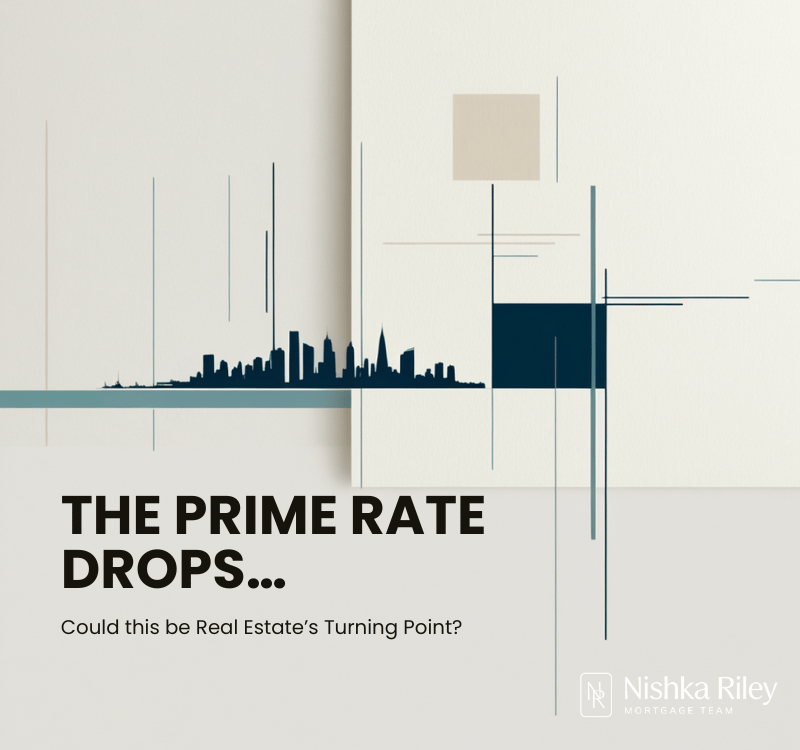
Rate Update – All Quite on the Western Front
June 9, 2021
Mortgage Rate Update – Unprecedented Stimulus, Unprecedented Tightening.
June 1, 2022During today’s policy meeting, Governor Tiff Macklem of the Bank of Canada decided to increase the prime rate by 0.5% versus the usual 0.25%. A rate increase of 50bps ( 0.5% ) hasn’t been done since Y2K / Dot Com bubble, which raises the question; are we heading down the road to double-digit inflation?
The short answer is no, and in this post, I’ll explain why.
The reason Central Bankers raise rates is to curb inflation and keep the economy from growing too fast. So a jump of 50bps must surely mean that the economy is growing too fast?
Not this time.
That’s because the inflation we are currently experiencing relates to supply chain issues caused by COVID combined with the events in Ukraine which is impacting oil prices and other crop related commodities. It’s the perfect storm of economic disruption, but not economic devastation.
These extra costs are filtering down to all sectors of the economy and translating into higher production costs. However, once these issues clear up, the bottlenecks in the economy will be opened up and the natural competitive environment that comes with an open capital market system will lead to prices returning to normal levels. Think: if the manufacturing cost of making widgets goes down ( lower oil prices / lower transportation cost ), and you can now make more widgets ( supply chain problems gone ), you can sell said widgets at a lower price ( supply and demand back to normal ).
But are we going to 18%?
No we aren’t. The 1980s was a very different economic period. The key economic historical events being the USA decoupling their currency from physical gold, the forming of OPEC and the resulting 2 oil embargos and the baby boomers entering the adult work force. These issues led to a period of stagflation which economists had never experienced before and didn’t know how to deal with. Trust that the Central Bankers of the world have learned from this lesson and know how to cut this one off at the pass.
But unemployment is at an all time low?
Yes, this usually keeps the Governor up late at night, and with good reason. With fewer workers to access, employers have to retain employees. How do you do that? You either pay them more or you give them more perks – both take away from the bottom line of the corporate balance sheet. The reason wage growth is a problem is simple – good luck reducing an employee’s wages. That means wage costs get baked into the cost of manufacturing/service and get transferred into the cost of the end product. So far I would say we have seen a minimal amount of wage growth ( keep in mind I see about 300 pay stubs a year ) but nothing significant. I would actually argue that we haven’t seen any wage pressure in the past decade when you factor in the productivity associated/expected from mobile devices. And to add to the lack of concern in the current low unemployment figures, David Rosenberg ( BMO’s previous Chief Economist who correctly predicted the crash of Nortel – since we are referencing Y2K ) actually said on BNN back in 2018 that the reporting of the unemployment figures is systemically flawed, with a bias to stating the figure much lower than it actually is.
So what does this mean for your mortgage? And how much higher are rates going?
To answer this question we’ll need to step into the office of the bankers who fund your mortgage. Picture if you will, a person sitting behind a large oak desk with head heavy in hand and a large glass of Alka Seltzer to their left. The reason for their high level of anxiety? The cost of mortgage funds. You see the bankers have to promise you a rate now and then go get the money to fund your mortgage later. If you know costs are rising, it makes sense ( cents ?) that you better raise your mortgage rates now, so you don’t lose your shirt later. What this means is the current five year fixed rate already has the future cost built in. This is a part of the reason why we have switched to recommending terms less than 5 years, and have made a bigger shift to variable rate mortgages for our clients that are renewing.
Recommending a variable in this rising environment? Are we crazy?!
Since 1975 variable rate mortgages have outperformed fixed rate mortgages over a rolling 5 year period. The key reason is variable rate increases tend to lag fixed rate increases ( see paragraph above regarding the banker ) and lead on the rate decreases. This lag and lead is a big part of the savings. The other aspect of the savings is the fact that variable rate mortgages are funded through entirely different mechanisms, which reduce the cost of funds risks for the banks. Even with a the expected increases in prime you’ll still be further ahead over the next 5 years than if you took today’s 5 year fixed.
But, just as we know that over the long run stocks outperform all other types of investments, not everyone has the risk appetite to be fully invested. That’s where my role as a professional mortgage advisor comes into play. Having 25 years of industry experience and a previous investment background I can help guide you through the decision making process of fixed vs variable mortgage and help you make the best for you choice.
Bottom line, if your mortgage is coming up for renewal in the next 4 – 5 months give us a call to discuss what your options are and we can help you put together a solution that fits your life goals, budget and will help you sleep at night.
Stay tuned for more updates on our blog regarding the current rate environment and how to navigate the challenges/opportunities it will present.
Stay positive, stay healthy, and call if you need to hear some sunshine!
Did you Like this post? Then you’ll Like my Facebook Page. It’s filled with current news on what’s going on in the world of real estate.





